Beneath every gleaming vehicle lies the satisfaction of a job well done—one that doesn’t require a professional touch or an expensive trip to the detailing shop. DIY car detailing is more than just a chore; it’s a rewarding blend of art and care that transforms your ride into a showroom-worthy masterpiece. Whether you’re a seasoned gearhead or a weekend warrior, this step-by-step guide will equip you with the knowledge and techniques to bring out the best in your car, right in your own driveway. Ready to roll up your sleeves and breathe new life into your vehicle? Let’s dive in.
Table of Contents
- Choosing the Right Tools and Products for Effective Car Detailing
- Preparing Your Vehicle for a Thorough Clean
- Mastering Exterior Washing Techniques for a Spotless Finish
- Detailed Approaches to Interior Cleaning and Care
- Polishing and Waxing Tips to Restore Shine and Protection
- Final Touches and Maintenance for Long-Lasting Results
- Q&A
- The Way Forward
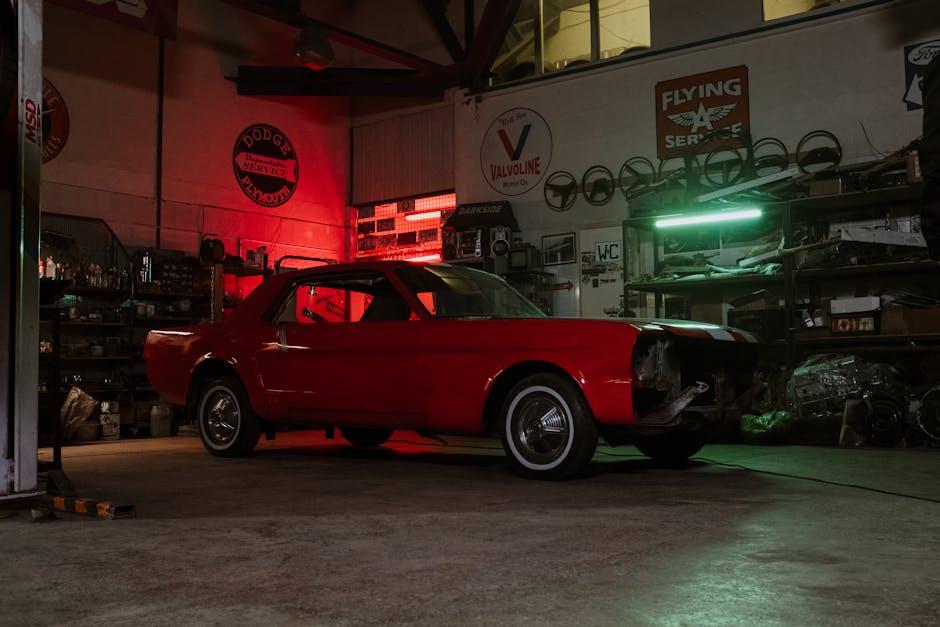
Choosing the Right Tools and Products for Effective Car Detailing
Selecting the ideal tools and products can transform your car detailing experience from a tedious chore into a satisfying ritual. Start with microfiber cloths for their unmatched gentleness on paint and glass. Invest in a quality dual-action polisher if you want to tackle swirl marks and minor scratches efficiently. Don’t overlook the power of specialized brushes; a soft-bristle wheel brush for your tires and a long-handled brush for hard-to-reach crevices can make a noticeable difference. When it comes to cleaning agents, opt for pH-balanced shampoos that protect your car’s finish and ensure that every wash enhances the gloss rather than dulling it.
Choosing the right products extends beyond just cleaners and brushes. Here’s a quick reference to help you build your kit:
| Tool/Product | Purpose | Best Feature |
|---|---|---|
| Microfiber Cloths | Wiping & drying | Non-scratch, high absorbency |
| Dual-Action Polisher | Buffing & polishing | Safe for beginners, effective swirl removal |
| pH-Balanced Shampoo | Washing exterior | Maintains wax, gentle on paint |
| Wheel Brush | Cleaning rims & tires | Ergonomic handle, non-abrasive bristles |
| Detailing Brushes | Interior & trim cleaning | Varied sizes for intricate spots |
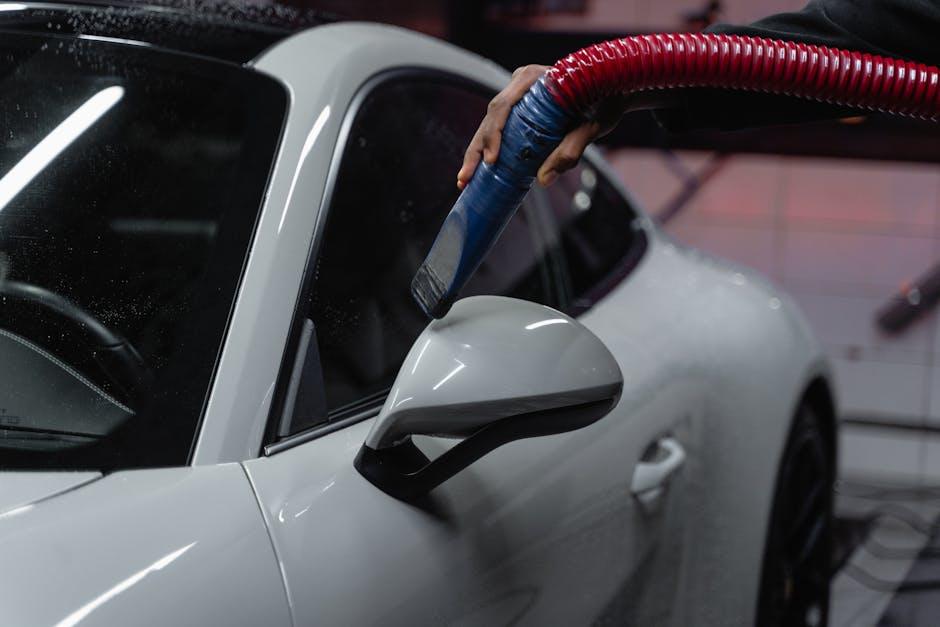
Preparing Your Vehicle for a Thorough Clean
Before diving into the deep cleaning process, it’s essential to create an organized workspace and ensure your vehicle is ready for a thorough detail. Start by parking your car in a shaded, well-ventilated area to prevent cleaning products from drying too quickly and leaving stubborn marks. Clear out all personal belongings, trash, and loose items from both the interior and trunk—this allows for unhindered access to every nook and cranny, ensuring no spot goes unnoticed.
Gathering the right tools and supplies ahead of time will streamline your process and boost efficiency. Stock up on microfiber cloths, degreasers, brushes, and a high-quality vacuum, among others. It’s also wise to protect surrounding surfaces by laying down soft mats or towels under tire rims and inside doors where drips or residue might fall during washing.
- Choose a shaded parking spot for cooler, safer uptime
- Remove all personal items to unclutter the space
- Have all cleaning materials at your fingertips
- Laying protective covers to avoid accidental stains
| Essential Supply | Purpose |
|---|---|
| Microfiber Towels | Gentle cleaning & drying |
| Detailing Brushes | Reaching tight spaces |
| Vacuum Cleaner | Removing dirt & debris |
| Soap & Degreaser | Breaking down grime |
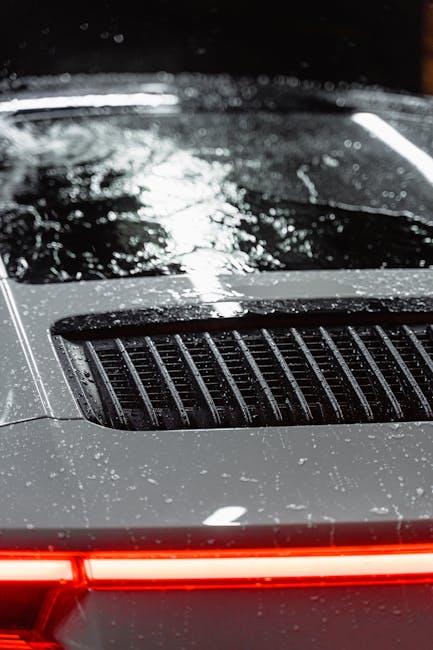
Mastering Exterior Washing Techniques for a Spotless Finish
Achieving a pristine exterior requires more than just a quick rinse—it’s about understanding the nuances of dirt, grime, and the delicate automotive paint beneath. Start by rinsing your vehicle thoroughly with a gentle stream of water to loosen dirt particles. Next, use a high-quality, pH-balanced car shampoo combined with a microfiber wash mitt to gently lift contaminants away without causing scratches. Remember to wash using a two-bucket method: one bucket for the soapy water and another for rinsing your mitt, minimizing the risk of grit returning to your car’s surface.
Focus on these key areas to ensure a consistent, spotless finish:
- Wheels and Tires: Use a dedicated wheel cleaner and brush. Their tough surfaces benefit from specific products that break down brake dust and road grime.
- Lower Panels and Bumpers: These collect the most dirt. Clean from the bottom up to prevent re-depositing debris on freshly washed sections.
- Glass and Mirrors: Finish strong by wiping down windows with an ammonia-free glass cleaner to avoid streaks and maintain clarity.
| Step | Action | Why It Matters |
|---|---|---|
| 1 | Pre-rinse | Loosens dirt, reduces scratches |
| 2 | Two-bucket wash | Keeps grit out of paintwork |
| 3 | Clean wheels first | Prevents brake dust transfer |
| 4 | Detail glass last | Ensures crystal-clear visibility |
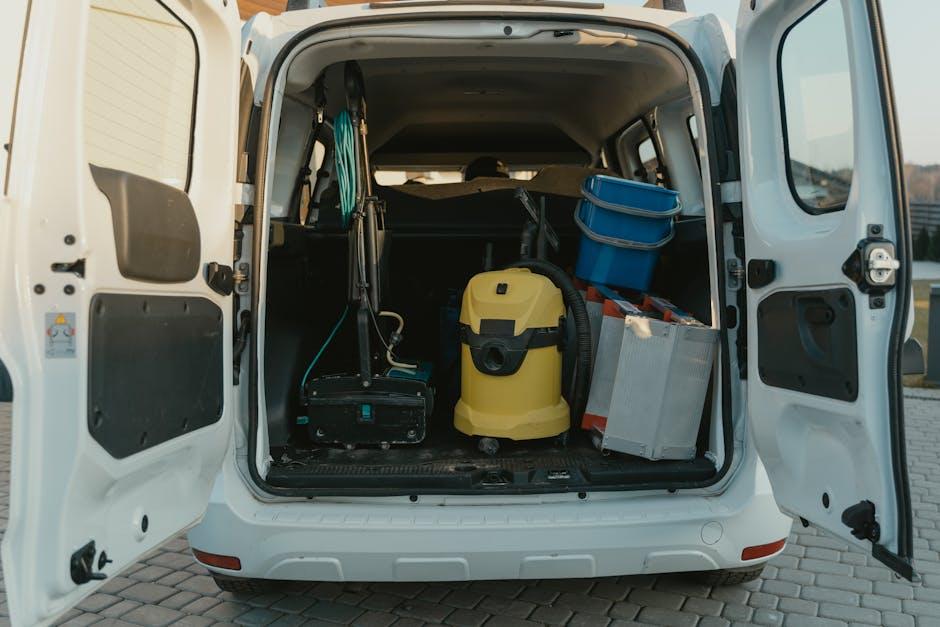
Detailed Approaches to Interior Cleaning and Care
Start by removing all loose debris such as trash, leaves, and crumbs from your car’s interior. Use a handheld vacuum with various attachments to reach tight spaces like under the seats, air vents, and between seat cushions. For fabric surfaces, consider a fabric cleaner or upholstery shampoo; apply it with a soft brush to gently lift stains without damaging fibers. Don’t forget to spray a quick upholstery freshener afterward to keep the cabin smelling crisp and inviting.
For leather interiors, a specialized leather cleaner and conditioner is key to maintaining suppleness and preventing cracks. Apply the cleaner with a microfiber cloth in circular motions, then wipe away any residue. Follow with a leather conditioner to nourish the surface and restore its natural sheen. Additionally, use a soft brush or compressed air to dust air vents and intricate dashboard areas. Below is a quick reference table for common interior materials and recommended care products:
| Material | Cleaning Product | Care Tip |
|---|---|---|
| Fabric Seats | Upholstery Shampoo | Use soft brush & air dry |
| Leather Seats | Leather Cleaner & Conditioner | Wipe gently, avoid water |
| Dashboard & Trim | Interior Detailer Spray | Use microfiber cloth only |
| Carpets | Carpet Cleaner | Spot clean, vacuum regularly |
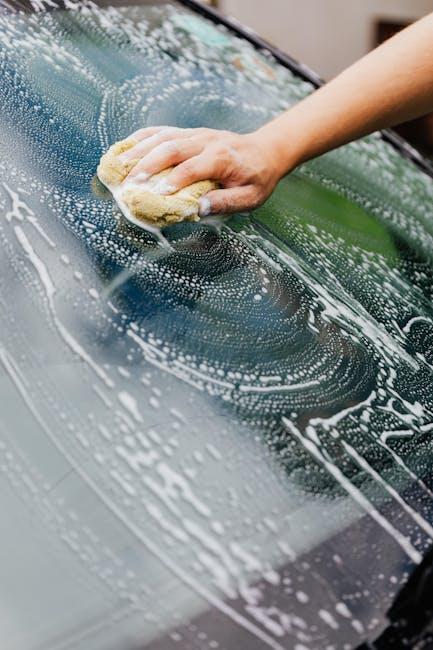
Polishing and Waxing Tips to Restore Shine and Protection
Achieving a brilliant finish requires attention to detail and the right techniques. Before applying any product, make sure your vehicle’s surface is completely clean and dry to avoid trapping dirt or moisture beneath wax or polish. Use a clay bar if necessary to remove embedded contaminants for a smoother surface. When selecting a polish, choose one that matches your paint’s condition—mild polishes for light oxidation and scratch removal, and more abrasive options for deeper flaws. Apply polish using a microfiber applicator pad in small, circular motions, ensuring even coverage without applying excessive pressure which can cause unnecessary wear on your paint.
Once the polish has done its job, wax acts as your paint’s guardian, locking in shine and repelling environmental damage. Opt for a high-quality paste or liquid wax, applying it thinly using a foam applicator pad. Allow the wax to haze over, then buff it off with a clean microfiber towel to reveal a glass-like glow. Here’s a quick guide for the waxing process:
| Step | Tip |
|---|---|
| Apply Thin Layers | Less is more; too much wax causes streaking |
| Buff in Circular Motions | Enhances even shine and prevents streaks |
| Use Clean Towels | Different towels for buffing and polishing avoid cross-contamination |
| Work in Shade | Prevents quick drying and ensures better adhesion |
- Patience is key: Allow wax to cure for maximum durability before exposure to weather.
- Routine application: Wax every 3-4 months to maintain protective barrier.
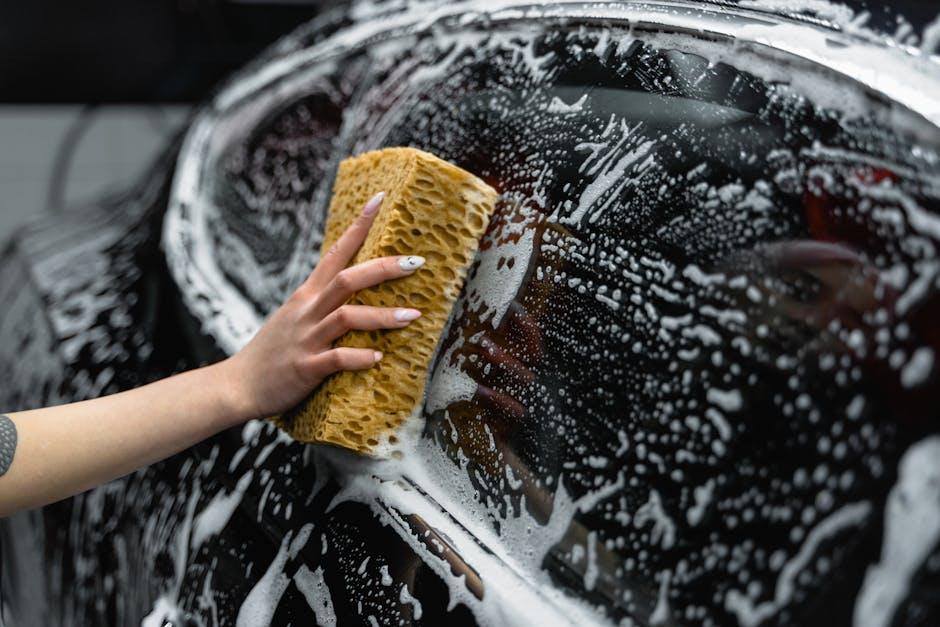
Final Touches and Maintenance for Long-Lasting Results
To ensure your efforts shine for months to come, it’s crucial to apply a high-quality wax or sealant. These products act as a protective barrier against environmental elements like UV rays, dirt, and water spots. Use a microfiber applicator to spread the wax evenly, then buff it off with a clean, soft cloth to reveal a glossy, smooth finish. Don’t forget to keep your wheels and tires conditioned with dedicated tire dressings that repel dust and uplift the overall look. Regular touch-ups every few weeks will maintain that freshly-detailed feel without the major time commitment.
Long-term upkeep is all about establishing simple habits that safeguard your investment. Consider these tips to keep your car looking its best:
- Frequent quick washes: Rinse off grime before it bonds to the paint.
- Use quality microfiber towels: Prevent scratches during drying and dusting.
- Park in shaded or covered areas: Minimize sun damage and bird droppings.
- Inspect regularly: Spot treat small stains or chips promptly.
| Maintenance Task | Frequency | Benefit |
|---|---|---|
| Wax Application | Every 3 months | Long-lasting shine and protection |
| Quick Wash | Weekly | Removes surface contaminants |
| Tire Dressing | Monthly | Enhances appearance and prevents cracking |
Q&A
Q&A: DIY Car Detailing – A Step-by-Step Guide
Q1: What exactly is car detailing, and how does it differ from a regular car wash?
A: Car detailing is an in-depth cleaning process that goes beyond a simple wash. It involves thoroughly cleaning, restoring, and protecting every inch of your vehicle—both inside and out. Unlike a basic car wash, which typically only removes surface dirt, detailing focuses on deep cleaning, polishing paint, treating upholstery, and even addressing minor imperfections to bring back that showroom shine.
Q2: What are the essential tools and materials I need for DIY car detailing?
A: To get started, gather microfiber towels, car wash soap (not dish detergent), a bucket, a soft-bristled brush, clay bar, polish, wax or sealant, tire cleaner, interior cleaner, and a vacuum. Optional but helpful items include a dual-action polisher and an air compressor or canned air for tight spots. Having the right supplies ensures each step delivers optimal results without damaging your car.
Q3: How do I prepare my car before detailing?
A: Begin by parking your car in a shaded, cool area to prevent water spots. Remove personal items and debris from the interior. Rinse the exterior to remove loose dirt. Check for any paint chips or scratches to treat later. Proper prep helps maximize the effectiveness of each step and protects surfaces during cleaning.
Q4: What is the best sequence for washing and detailing my car?
A: Start with the exterior: wash from top to bottom using a two-bucket method (one for soapy water, one for rinsing). Then, clay bar the paint to remove embedded contaminants. Next, polish any dull or scratched areas, followed by applying wax or sealant for protection. After the exterior, tackle the wheels and tires with dedicated cleaners and brushes. Finally, move inside: vacuum carpets and seats, clean upholstery and windows, and condition leather or vinyl surfaces.
Q5: How often should I detail my car to keep it looking its best?
A: Generally, a full detail every 3–6 months is ideal for maintaining your car’s appearance and value. Washing should be done more frequently, about every 1–2 weeks, depending on driving conditions. Regular upkeep prevents build-up of grime and protects surfaces from wear and environmental damage.
Q6: Can DIY car detailing help protect my car’s resale value?
A: Absolutely! Maintaining your vehicle’s interior and exterior condition through regular detailing helps preserve its paint, upholstery, and overall appearance. A well-kept car feels newer, makes a great impression, and often commands a higher price when selling or trading in.
Q7: Are there any common mistakes to avoid when detailing my car?
A: Yes—avoid washing your car under direct sunlight, which causes soap to dry too quickly and leave spots. Don’t use household cleaners on your car’s surfaces, as they can strip protective coatings. Using dirty towels or brushes can create scratches, so always use clean, dedicated tools. Lastly, be gentle with polishes and waxes; aggressive scrubbing can damage paint layers.
Q8: Is DIY car detailing suitable for beginners, or should I consider professional services?
A: DIY detailing can be very rewarding and cost-effective, even for beginners, provided you follow the steps carefully and use the right products. However, professional detailers have specialized tools and expertise for severe paint imperfections or deep interior stains. For routine maintenance, DIY is a great option, but professionals can help when your car needs more intensive care.
Q9: How long does a full DIY car detailing session typically take?
A: Timing varies depending on your experience level and the condition of your car, but expect to spend 3 to 6 hours on a full detail. Breaking the process into sessions over a weekend can make it more manageable and ensure thorough results without rushing.
Q10: What’s the biggest benefit of learning to detail my own car?
A: Besides saving money, DIY car detailing offers a satisfying hands-on experience that deepens your connection with your vehicle. Seeing your car transform into a spotless, gleaming ride—knowing you did it yourself—brings a unique sense of pride and accomplishment.
The Way Forward
Whether you’re a weekend warrior or a meticulous perfectionist, DIY car detailing offers a rewarding way to revive your ride’s shine without breaking the bank. With patience, the right tools, and a little elbow grease, turning your vehicle into a showroom-worthy masterpiece is entirely within reach. So roll up your sleeves, embrace the process, and let your car tell its story through a gleam that only your own hands could achieve. After all, every detail counts on the road to automotive pride.

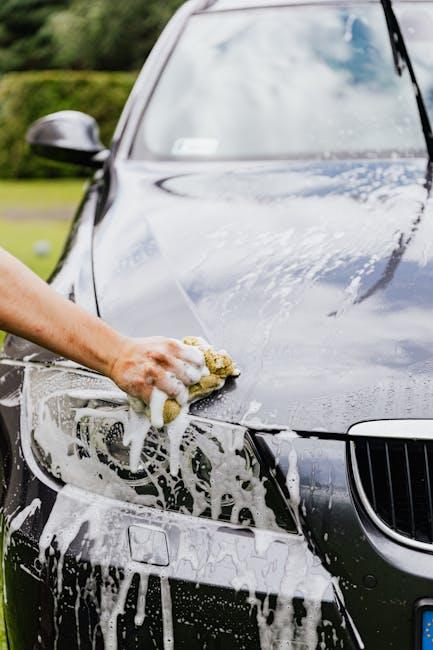
5 Comments
nootzp
nootzp
uglu7w
tndimc
xmz0yf